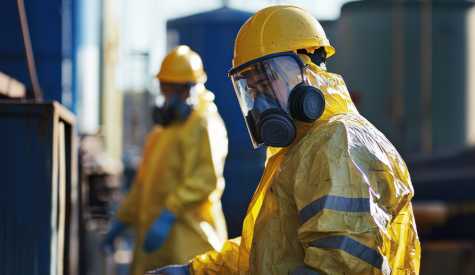Hazard Communications for the Oil and Gas Industry

A hazard communication (HAZCOM) program is designed to protect employees from chemical hazards in the workplace. The Occupational Safety and Health Administration (OSHA)requires employers to provide labels and safety data sheets (SDS) for every hazardous chemical present in their workplace. Employers must also train their employees on the HAZCOM standard before they can begin work around chemical hazards. HAZCOM programs are particularly important in the oil and gas industry, where employees are regularly exposed to harmful, even potentially fatal, chemical hazards.
HAZCOM Plans
HAZCOM plans summarize the steps the employer is taking to prevent workers from contacting hazardous chemicals. HAZCOM plans must include:
- Information about the labels and warnings used in the work environment
- A list of all chemical hazards found in the workplace
- Appropriate personal protective equipment (PPE) training requirements
- Location of SDSs
Labeling Requirements
OSHA uses the Globally Harmonized System, or GHS, to classify and label chemicals. GHS labels must have
- Pictograms
- A hazard statement
- A precautionary statement
- A signal word
- A product identifier
- Name, address, and telephone number of the manufacturer or importer

Sometimes, chemicals may be labeled with Department of Transportation (DOT) labels or National Fire Protection Association (NFPA) labels. All employees must be trained on the labels used in their workplace before beginning work around hazardous chemicals.
Safety Data Sheets (SDS)

Labels provide a broad overview of a hazardous chemical’s properties. For more in-depth information about the chemical, employees should consult the chemical’s SDS. SDSs must be in a well-known location that all employees can easily access. They must be formatted with the following sections:
- Chemical identification
- Hazard identification
- Composition/information on ingredients
- First-aid measures
- Fire-fighting measures
- Accidental release measures
- Handling and storage
- Exposure controls/personal protection
- Physical and chemical properties
- Stability and reactivity
- Toxicological information
- Ecological information
- Disposal considerations
- Transport information
- Regulatory information
- Other information
Summary
Employers must develop a hazard communication plan to protect employees from chemical hazards. HAZCOM plans must include:
- Labeling information
- Training programs
- SDSs
- List of all chemicals used in the workplace
- Appropriate PPE
